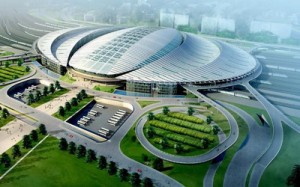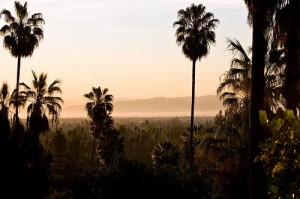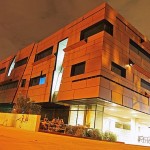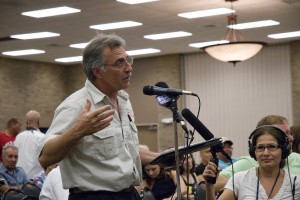 High speed rail is on the agenda in California. Plans call for the service to run from Anaheim and end up at a new Transbay Station in San Francisco. Trains will travel between LA and San Francisco in under 2 hours and 40 minutes, at speeds of up to 220 mph. I wonder if there will be a solar power stations used like the one in Beijing. The South Railway Station began operations in 2008. It has become the largest and the most technologically sophisticated train station in Asia. Beijing South Railway Station is huge, it has 13 platforms, 24 rails and has over 3200 solar panels installed on its’ circular roof. It can accommodate up to 15 thousand passengers. It is also one of the most environmentally friendly railway stations in the world. Its solar panels will produce as much as 100 hundred kilowatt-hours of power every day.
High speed rail is on the agenda in California. Plans call for the service to run from Anaheim and end up at a new Transbay Station in San Francisco. Trains will travel between LA and San Francisco in under 2 hours and 40 minutes, at speeds of up to 220 mph. I wonder if there will be a solar power stations used like the one in Beijing. The South Railway Station began operations in 2008. It has become the largest and the most technologically sophisticated train station in Asia. Beijing South Railway Station is huge, it has 13 platforms, 24 rails and has over 3200 solar panels installed on its’ circular roof. It can accommodate up to 15 thousand passengers. It is also one of the most environmentally friendly railway stations in the world. Its solar panels will produce as much as 100 hundred kilowatt-hours of power every day.
Just announced renewable energy company Enfinity has partnered with rail operator Infrabel to start work  on a solar power project on the roof of the high-speed rail tunnel along the E19 highway in Belgium. The solar energy will be used by the trains and station servicing both conventional and high-speed trains, representing a unique application of solar power in Europe. More than 16,000 solar panels will be installed on the roof of the high-speed rail tunnel stretching just over 2 miles long. The tunnel is primarily used by the high-speed train connecting Amsterdam and Paris via Brussels. Commenting on the intricacies of the project, Patrick Decuyper, CEO of Enfinity Europe said that a large technical team will install more than 16,000 monocrystalline solar panels (245 Wp per panel) on the roof with a special ballast tile structure, with no rooftop perforations required.
on a solar power project on the roof of the high-speed rail tunnel along the E19 highway in Belgium. The solar energy will be used by the trains and station servicing both conventional and high-speed trains, representing a unique application of solar power in Europe. More than 16,000 solar panels will be installed on the roof of the high-speed rail tunnel stretching just over 2 miles long. The tunnel is primarily used by the high-speed train connecting Amsterdam and Paris via Brussels. Commenting on the intricacies of the project, Patrick Decuyper, CEO of Enfinity Europe said that a large technical team will install more than 16,000 monocrystalline solar panels (245 Wp per panel) on the roof with a special ballast tile structure, with no rooftop perforations required.
CALIFORNIA HIGH SPEED RAIL PLANS
The roof’s total surface area is roughly equivalent to 8 football fields and is estimated to produce 3.3 mega watts of electricity per year.The project completion is scheduled for December 2010. The total investment budget is $20.1 million. There you have it solar powered train stations powering the station and the trains….California all abroad!






